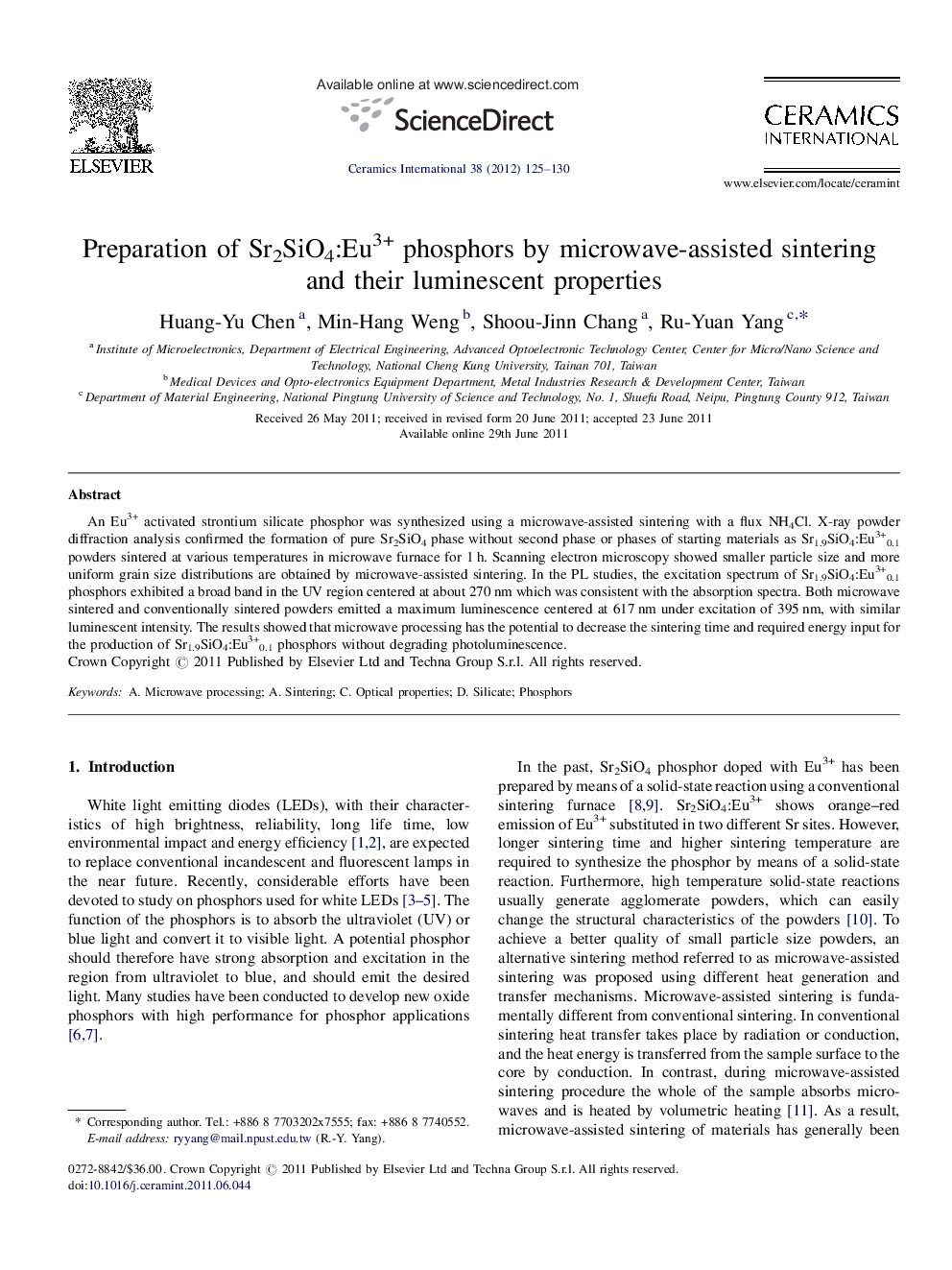| Article ID | Journal | Published Year | Pages | File Type |
|---|---|---|---|---|
| 1462837 | Ceramics International | 2012 | 6 Pages |
An Eu3+ activated strontium silicate phosphor was synthesized using a microwave-assisted sintering with a flux NH4Cl. X-ray powder diffraction analysis confirmed the formation of pure Sr2SiO4 phase without second phase or phases of starting materials as Sr1.9SiO4:Eu3+0.1 powders sintered at various temperatures in microwave furnace for 1 h. Scanning electron microscopy showed smaller particle size and more uniform grain size distributions are obtained by microwave-assisted sintering. In the PL studies, the excitation spectrum of Sr1.9SiO4:Eu3+0.1 phosphors exhibited a broad band in the UV region centered at about 270 nm which was consistent with the absorption spectra. Both microwave sintered and conventionally sintered powders emitted a maximum luminescence centered at 617 nm under excitation of 395 nm, with similar luminescent intensity. The results showed that microwave processing has the potential to decrease the sintering time and required energy input for the production of Sr1.9SiO4:Eu3+0.1 phosphors without degrading photoluminescence.
